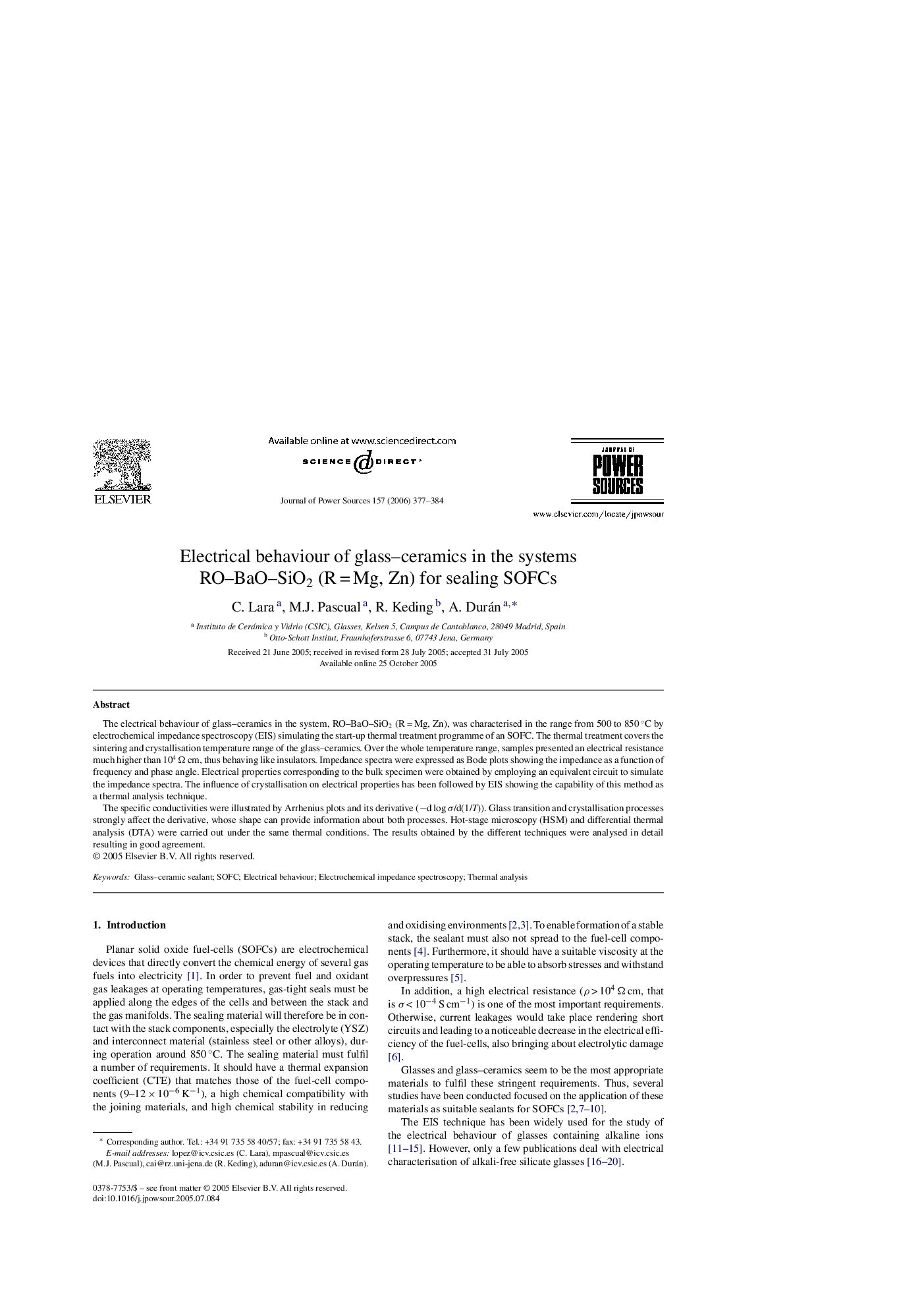| Article ID | Journal | Published Year | Pages | File Type |
|---|---|---|---|---|
| 1292683 | Journal of Power Sources | 2006 | 8 Pages |
The electrical behaviour of glass–ceramics in the system, RO–BaO–SiO2 (R = Mg, Zn), was characterised in the range from 500 to 850 °C by electrochemical impedance spectroscopy (EIS) simulating the start-up thermal treatment programme of an SOFC. The thermal treatment covers the sintering and crystallisation temperature range of the glass–ceramics. Over the whole temperature range, samples presented an electrical resistance much higher than 104 Ω cm, thus behaving like insulators. Impedance spectra were expressed as Bode plots showing the impedance as a function of frequency and phase angle. Electrical properties corresponding to the bulk specimen were obtained by employing an equivalent circuit to simulate the impedance spectra. The influence of crystallisation on electrical properties has been followed by EIS showing the capability of this method as a thermal analysis technique.The specific conductivities were illustrated by Arrhenius plots and its derivative (−d log σ/d(1/T)). Glass transition and crystallisation processes strongly affect the derivative, whose shape can provide information about both processes. Hot-stage microscopy (HSM) and differential thermal analysis (DTA) were carried out under the same thermal conditions. The results obtained by the different techniques were analysed in detail resulting in good agreement.
